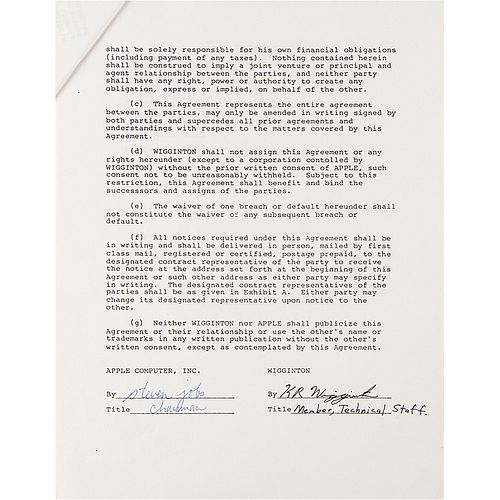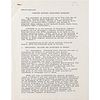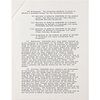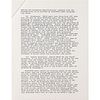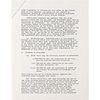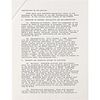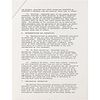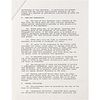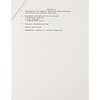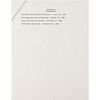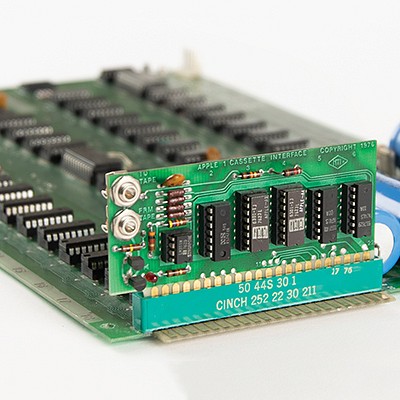Steve Jobs Signed 1982 Apple Contract for Macintosh Word Processor
Two ways to bid:
- Leave a max absentee bid and the platform will bid on your behalf up to your maximum bid during the live auction.
- Bid live during the auction and your bids will be submitted real-time to the auctioneer.
Bid Increments
| Price | Bid Increment |
|---|---|
| $0 | $5 |
| $50 | $10 |
| $200 | $25 |
| $500 | $50 |
About Auction
Aug 24, 2023
RR Auction support@rrauction.com
- Lot Description
DS, signed “steven jobs, chairman,” twelve pages, 8.5 x 11, July 12, 1982. Significant "Computer Software Development Agreement" between Apple Computer, Inc., and Randy Wigginton, as a semi-independent developer for a "MacIntosh Word Processor" and core editing routines. The contract provides the terms of the deal, including equipment to be loaned to Wigginton by Apple ("2 MacIntosh computer, 1 Lisa computer, 1 ProFile Disk Drive"), milestones to be met, and compensation/royalties to be paid. Signed at the conclusion in blue ballpoint by Steve Jobs as chairman of Apple Computer ("steven jobs, chairman"), and countersigned in black felt tip by Wigginton as the developer ("K. R. Wigginton, Member, Technical Staff"). In fine condition.
This significant document set the stage for the desktop publishing revolution—led by the Macintosh computer and MacWrite software—introduced two years later in 1984. Randy Wigginton was originally hired in 1976 as Apple Computer employee #6, making several key contributions to the company's early, cutting-edge work in hardware and software: he collaborated Steve Wozniak on the circuit design and ROM software for the Apple II in 1977, contributed to the RWTS (read/write track-sector) routines for the Disk II floppy system, developed an early spreadsheet program, and was a member of the original Apple Macintosh design team. Wigginton left Apple in September 1981 to work independently, but was soon contracted by Apple to help work on MacWrite on a semi-formal basis—the project outlined in the present document.
During this period, Apple was developing the Macintosh—an accessible personal computer which offered a radically new approach, featuring a graphical user interface (GUI), built-in screen, and mouse. All of these revolutionized the user's experience, marking the transition from command-line computing to a point-and-click model. In order for the Macintosh to be a success, it had to ship with 'killer applications' that demonstrated the new interface to the fullest extent. These would become MacWrite and MacPaint—a WYSIWYG word processor and a raster graphics editor, both of which introduced consumers to the possibilities of the GUI and propelled the broad adoption of the Macintosh.
In its preamble, this document acknowledges the importance of MacWrite in the Macintosh rollout: "Wigginton is in the business of developing computer products and has developed a computer software program described below that Apple recognizes is of value to its product marketing plans." Per the agreement, Wigginton shall own "the Product (including source code and object code)" while granting Apple "the exclusive license to market the Product for the MacIntosh family of computers only." However, Wigginton agrees that "as of the time that Apple first distributes copies of the core editing routines as part of a system sold to the public, then the license of the core editing routines hereunder is hereby converted to a transfer of ownership to Apple of all rights, title and interest in the core editing routines for use on any computer." The core editing routines—representing the ability to manipulate elements like font styles, fractional character width, leading, and full justification—were critical to the WYSIWYG process and were necessary to deliver a professional layout on a personal computer.
A remarkable, early Macintosh document signed by Steve Jobs as Apple's chairman, representing a pioneering product in the field of personal computing. - Shipping Info
-
Bidder is liable for shipping and handling and providing accurate information as to shipping or delivery locations and arranging for such. RR Auction is unable to combine purchases from other auctions or affiliates into one package for shipping purposes. Lots won will be shipped in a commercially reasonable time after payment in good funds for the merchandise and the shipping fees are received or credit extended, except when third-party shipment occurs. Bidder agrees that service and handling charges related to shipping items which are not pre-paid may be charged to a credit card on file with RR Auction. Successful international Bidders shall provide written shipping instructions, including specified Customs declarations, to RR Auction for any lots to be delivered outside of the United States. NOTE: Declaration value shall be the item’(s) hammer price and RR Auction shall use the correct harmonized code for the lot. Domestic Bidders on lots designated for third-party shipment must designate the common carrier, accept risk of loss, and prepay shipping costs.
-
- Buyer's Premium



 EUR
EUR CAD
CAD AUD
AUD GBP
GBP MXN
MXN HKD
HKD CNY
CNY MYR
MYR SEK
SEK SGD
SGD CHF
CHF THB
THB